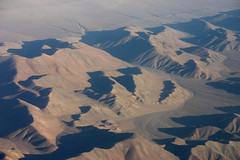This week's Factual Friday is dedicated to typography. This is because I have a bizarre obsession with the interrobang. The interrobang is a symbol that is a combination of a question mark and an exclamation mark and looks like this
‽. If the name
interrobang is not good enough for you (and who wouldn't it be good enough for‽ I mean, it sounds like something out of a comic strip), you can also call it a
quesclamation mark. Despite its amazing names it hasn't gained popularity and the ?! is favoured. However, it was popular in the 1960s and it even found its way onto typewriter keyboards.
Another interesting, but more widely used, piece of punctuation is the asperand, also known as the at sign. The at sign,
@, is not a recent phenonemon that appeared with the rise of the emails, as you would probably presume. It was used on keyboards as far back as the 1880s and the symbol was used for other purposes before that. An @ was found in a document from that land of Ikeas, Sweden in 1674 (image below). However, not even this is the first recorded usage.
In 1448, the @ symbol was being used in the Kingdom of Aragon.
In order to honour its rich and long history, I think that when giving out our emails we should say 'asperand' instead of 'at'. On that note, feel free to email me at bookwormsblog asperand gmail dot com.



